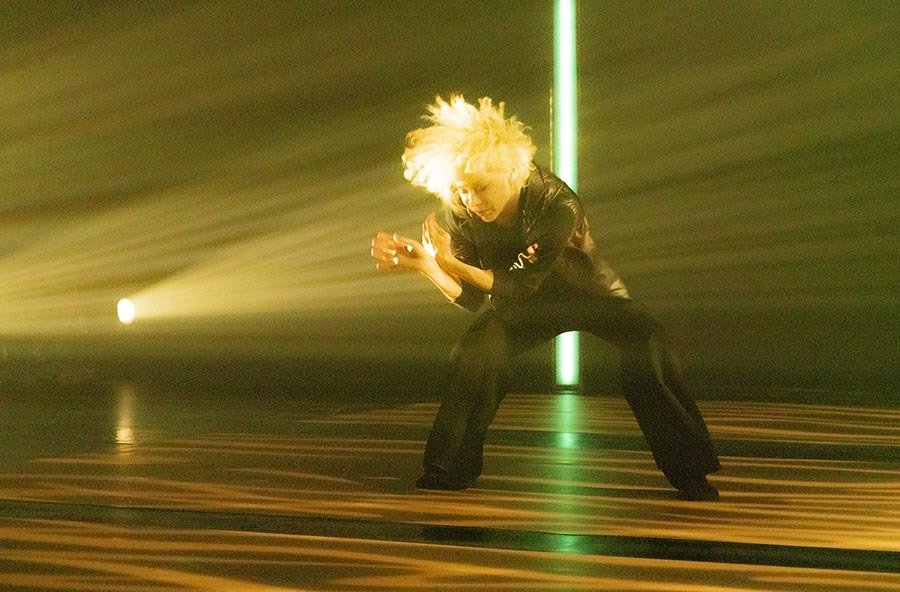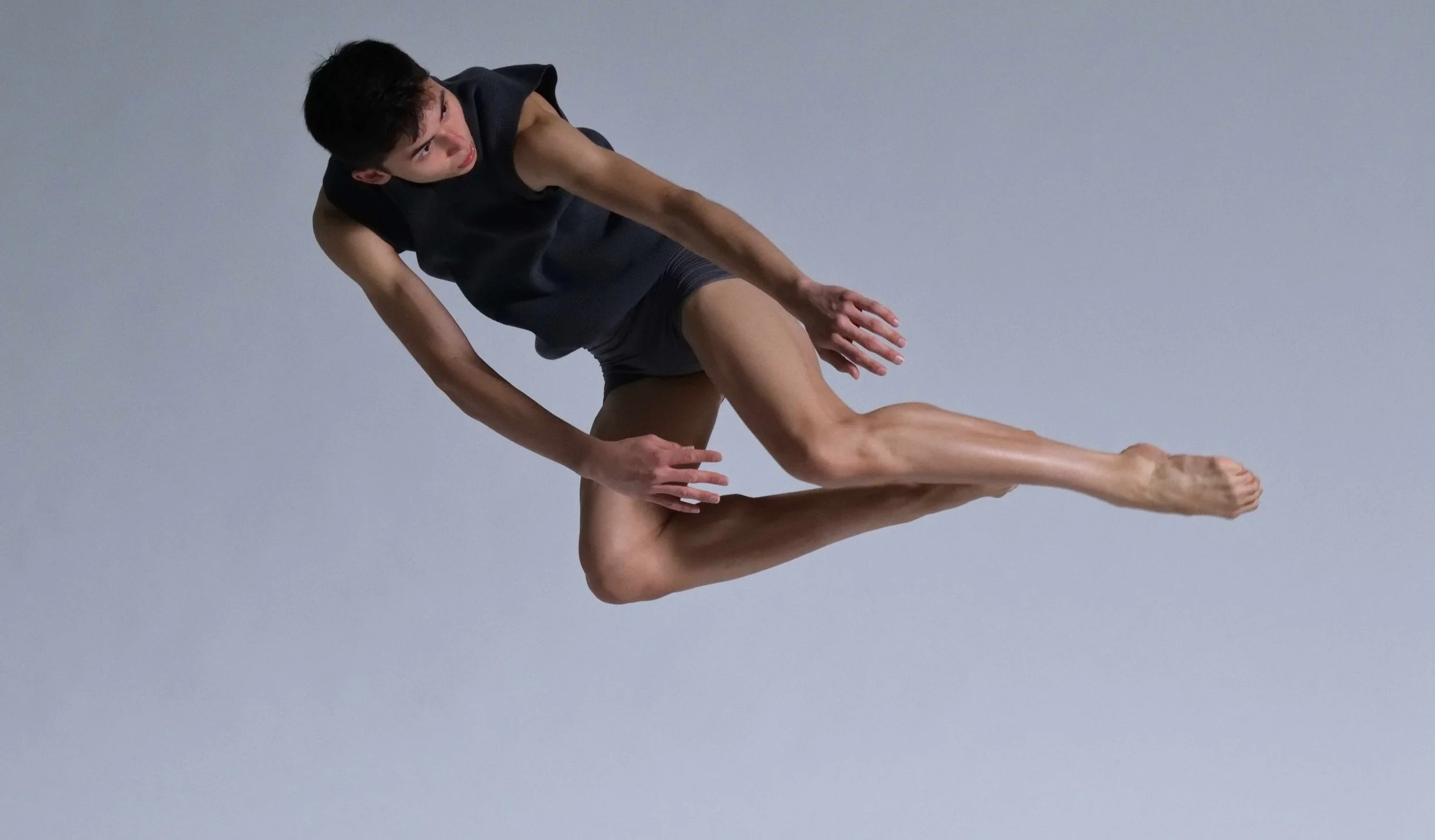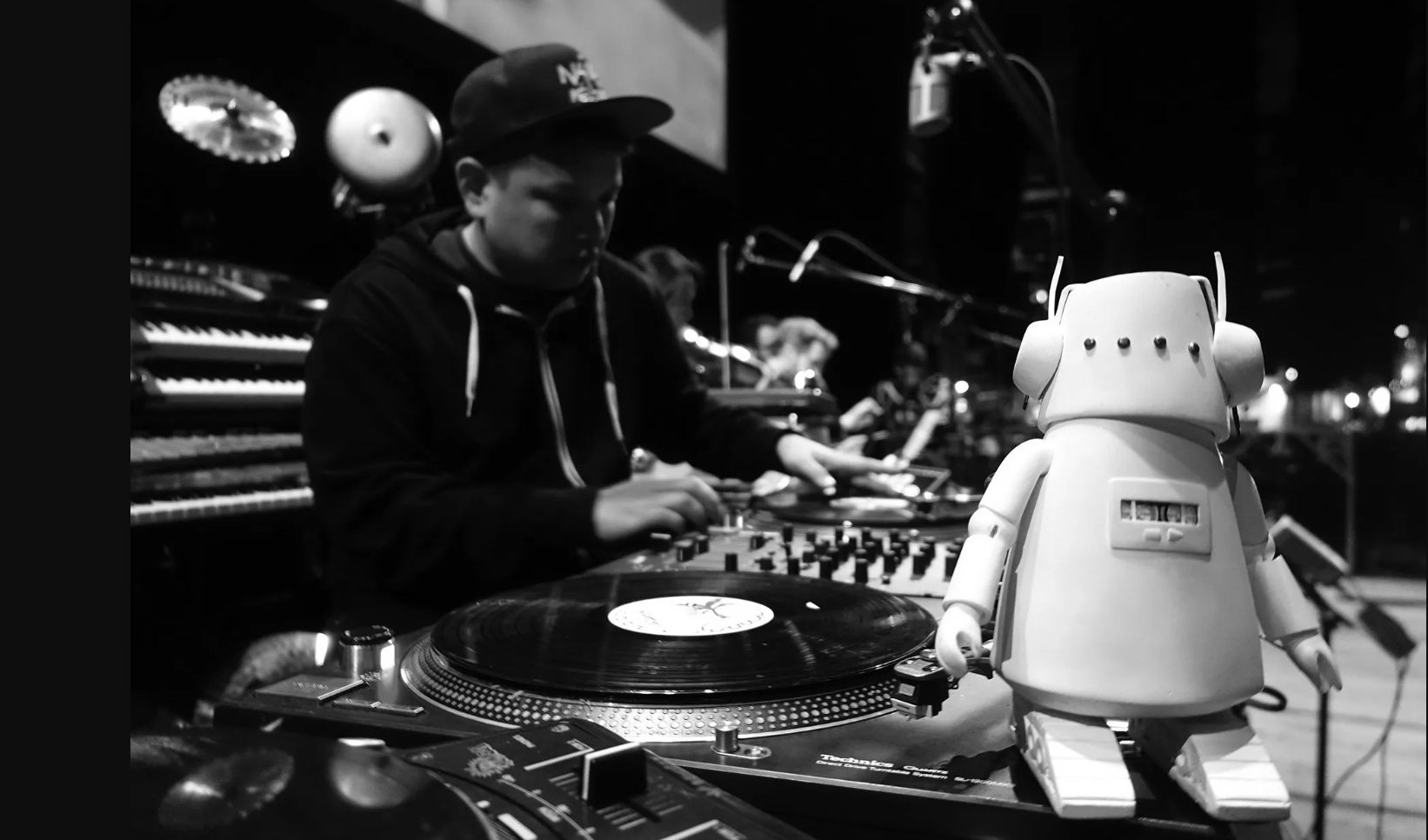In Stations solo, Louise Lecavalier journeys between four different physical moods
As ever, the Canadian dance icon’s work grew out of intense, instinctual exploration alone in the studio
Louise Lecavalier in Stations. Photo by Andre Cornellier
DanceHouse and SFU Woodward’s Cultural Programs present Louise Lecavalier/Fou glorieux’s Stations, at the Fei and Milton Wong Experimental Theatre from November 23 to 26
AS THRILLING AS IT will be to watch Louise Lecavalier’s hyperkinetic new solo Stations on her first performance in Vancouver since 2015, imagine what it would be like to watch her develop it in the studio.
The riveting, platinum-haired former star La La La Human Steps heads into creation only once every few years—the bulk of that creative process spent dancing through her ideas alone in her Montreal space. Rarely does she invite anyone from outside into that intense early exploration, where she searches for ever new ways to move that honed tool that is her body.
“It’s simple in a way,” the always affable artist tells Stir with a light laugh, speaking over the phone from Montreal. “I play some music. I improvise. And I film it….With time some ideas come up again and again, some I leave in the corner for later.
“I really trust my instinct,” she adds. “I’ve spent many years in the studio, and always my thought is if I go there, maybe nothing will come out. But it does. I’m very instinctive. The mental is still part of it, but I won’t find my solutions with the mental—though it’s nice to go there for ideas.”
Lecavalier, of course, has a lot of experience to draw on when she’s alone. Closing in on 63, she has several decades of dance behind her—talk about muscle memory. From 1981 to 1999, she was the platinum-maned star of La La La Human Steps, throwing herself into choreographer Edouard Lock’s gravity-defying barrel rolls and redefining the female physicality of dance. By the early 1990s, she was travelling the world with David Bowie’s Sound and Vision and Frank Zappa’s The Yellow Shark tours, and appearing in Kathryn Bigelow’s cyberpunk thriller Strange Days. In 2006, she moved on to founding her own company, Fou glorieux, continuing to push extremes—not just physical limits, but as she’s put it, reaching for the “more-than-human in the human”. Lecavalier has commissioned duets and solos that have toured here, marking her full-length choreographic debut with So Blue, which came to Vancouver just over seven years ago.
For the new piece Stations, the Canadian dance icon said she went into the studio with a vague concept: “I think I was always dreaming of making a piece that is one flow, with no cut, where I would go into one dance and then another and another.”
Lecavalier likens her hyperkinetic new solo Stations to the rounds of a boxing match. That’s not just a reference to the tireless energy she’ll put into the work—still boundless. Over the course of the title's four “stations”, the magnetic artist switches between physical moods, along with four separate lighting designs and pieces of music.
“The first part, when I created it, was very delicate—it was feeling the space and just living in the space, with a complete presence of the body,” she explains. “I was stretching the time in simple movements. The second is more animal for me, more about surviving. The third is more joyous and playful.” The fourth, she says, loops back, fragments, and mashes up what’s come before.
Louise Lecavalier in Stations. Photo by Andre Cornellier
“But I don’t think about those things when I’m dancing,” she stresses. “Usually I don’t try to explain each station.”
What she will say is that this work is her most personal to date; it digs the deepest into the stories that live in her flesh, muscle, and bone. She allows that, “The frenzy of living has always been in my work. But you can also see despair, hope, joy…”
Lecavalier likes the ambiguity and play on words in the title. She recalls that as a kid growing up in Quebec, the first time she heard the word “stations” was in relation to the Stations of the Cross, as she grew up in the Catholic church.
“Then, after that, there were the stations of the subway in Montreal,” she says, “and also stations in space.”
She likes that combination: the spiritual implications of the word, the reference to an intense final trajectory of life, the transitions and movement of a train or spaceship. Mostly, she likes that it is not stuck in a single meaning—that the complexities of her work, with its intensity and vulnerability, primal abandon and intricate control, go beyond words, as the greatest dance should.
“I don’t like that you can read one thing into it and one thing only,” Lecavalier says. “I prefer when work challenges me. Everything in life is not so simple.”














